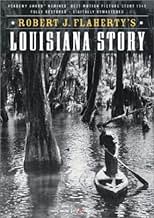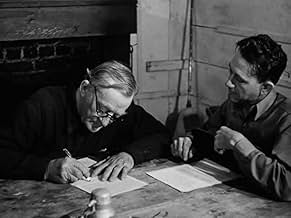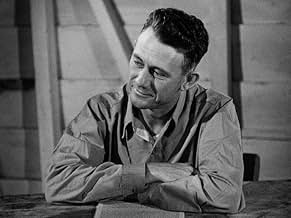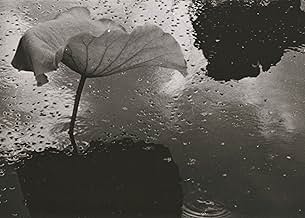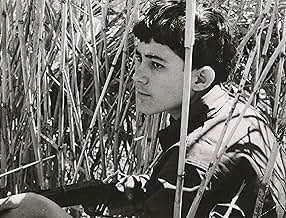IMDb रेटिंग
6.4/10
2.3 हज़ार
आपकी रेटिंग
अपनी भाषा में प्लॉट जोड़ेंThe idyllic life of a young Cajun boy and his pet raccoon is disrupted when the tranquility of the bayou is broken by an oil well drilling near his home.The idyllic life of a young Cajun boy and his pet raccoon is disrupted when the tranquility of the bayou is broken by an oil well drilling near his home.The idyllic life of a young Cajun boy and his pet raccoon is disrupted when the tranquility of the bayou is broken by an oil well drilling near his home.
- निर्देशक
- लेखक
- स्टार
- 1 ऑस्कर के लिए नामांकित
- 4 जीत और कुल 3 नामांकन
फ़ीचर्ड समीक्षाएं
10bandw
If you appreciate black and white cinematography, then you will delight in seeing the restored version of this movie on DVD. Cinematographer Richard Leacock and director Flaherty have teamed up to be the Ansel Adams of the film world. This is one of the most cinematic of films - its power and magic lie in the poetry of the images. The score by Virgil Thomson deserved its Pulitzer Prize for music in 1949; it receives a first class performance here by the Philadelphia Orchestra under Eugene Ormandy.
Some have commented on the weak story, but I rather enjoyed it - it could be billed as "Huckleberry Finn meets Standard Oil." The story is told through the eyes of a young Cajun who lives with his grandfather and mother in a simple cabin in the Louisiana marshland. In the opening shots we see the boy exploring the bayous in his canoe with his pet raccoon. He has an elemental bond with his natural environment that made me jealous. The boy's grandfather signs a lease allowing Humble Oil to drill a wildcat well on the bayou near his cabin. We share the boy's wonder at seeing the oil derrick being floated into position and his excitement in being invited onto the rig to follow the drilling up close.
From the viewpoint of a more environmentally conscious time some sixty years later, the benevolent portrayal of the oil industry seems a bit quaint, but that a young boy should be fascinated by the process seems genuine, in any era. In fact I found the details on the drilling captivating, particularly the way those scenes were filmed as a ballet with the roustabouts moving to the rhythms of their work accompanied by the clanking of pipes and chugging of engines.
I had a problem with how delighted the grandfather and mother were at being able just to buy a few gifts from the profits of oil having been struck on their land. While the company to whom they had leased their land was making mucho bucks, it looks like the family got a few hundred dollars. Given the fact that this movie was commissioned by Standard Oil, I am sure that it was not the intent to make the company appear so greedy, but maybe that's one thing that hasn't changed in sixty years.
Joseph Boudreaux as the young boy is endearing and Lionel Le Blanc is believable as the crusty grandfather. All the actors appear to be locals - this adds authenticity, but also presents a problem in that they are not greatly skilled when it comes to delivering their lines. But there is minimal dialog and what there is is hardly necessary as the music and images carry you along.
The DVD has several interesting extras, one of them being a reading of some letters from Richard Leacock (postmarked from Abbeville, Louisiana) to his wife during the long filming. In one letter he says that they ran across the twelve-year-old Boudreaux in a café in Cameron, Louisiana. He had an Acadian accent, had trapped with his father, could handle a Cajun pirogue, and had an infectious smile. They figured he was perfect for the part but, since he was born out of wedlock and under-aged, there were significant difficulties under Louisiana law to be worked out before he could be signed on. Leacock's letters are quite frank. In one he notes that there was buzz about the visit from the director of all Standard Oil public relations and that Flaherty did not like him, referring to him as "the old bastard."
This is a wonderful film in the literal sense of the word wonderful.
Some have commented on the weak story, but I rather enjoyed it - it could be billed as "Huckleberry Finn meets Standard Oil." The story is told through the eyes of a young Cajun who lives with his grandfather and mother in a simple cabin in the Louisiana marshland. In the opening shots we see the boy exploring the bayous in his canoe with his pet raccoon. He has an elemental bond with his natural environment that made me jealous. The boy's grandfather signs a lease allowing Humble Oil to drill a wildcat well on the bayou near his cabin. We share the boy's wonder at seeing the oil derrick being floated into position and his excitement in being invited onto the rig to follow the drilling up close.
From the viewpoint of a more environmentally conscious time some sixty years later, the benevolent portrayal of the oil industry seems a bit quaint, but that a young boy should be fascinated by the process seems genuine, in any era. In fact I found the details on the drilling captivating, particularly the way those scenes were filmed as a ballet with the roustabouts moving to the rhythms of their work accompanied by the clanking of pipes and chugging of engines.
I had a problem with how delighted the grandfather and mother were at being able just to buy a few gifts from the profits of oil having been struck on their land. While the company to whom they had leased their land was making mucho bucks, it looks like the family got a few hundred dollars. Given the fact that this movie was commissioned by Standard Oil, I am sure that it was not the intent to make the company appear so greedy, but maybe that's one thing that hasn't changed in sixty years.
Joseph Boudreaux as the young boy is endearing and Lionel Le Blanc is believable as the crusty grandfather. All the actors appear to be locals - this adds authenticity, but also presents a problem in that they are not greatly skilled when it comes to delivering their lines. But there is minimal dialog and what there is is hardly necessary as the music and images carry you along.
The DVD has several interesting extras, one of them being a reading of some letters from Richard Leacock (postmarked from Abbeville, Louisiana) to his wife during the long filming. In one letter he says that they ran across the twelve-year-old Boudreaux in a café in Cameron, Louisiana. He had an Acadian accent, had trapped with his father, could handle a Cajun pirogue, and had an infectious smile. They figured he was perfect for the part but, since he was born out of wedlock and under-aged, there were significant difficulties under Louisiana law to be worked out before he could be signed on. Leacock's letters are quite frank. In one he notes that there was buzz about the visit from the director of all Standard Oil public relations and that Flaherty did not like him, referring to him as "the old bastard."
This is a wonderful film in the literal sense of the word wonderful.
There's not a lot to say about this film. We get random images of a Cajun boy in his canoe, paddling quietly through a bayou, looking, watching, listening ... an alligator here, a snake there, all surrounded by lush swampland vegetation.
The plot is thin. About the only thing of interest is the appearance of an oil well crew that sets up a rig near the boy's home. The crew and the boy become friends, the crew curious about the boy's ability to catch fish, and the boy curious about the new technology. Yet, from the viewpoint of the 21st century, this heavy machinery is an odious intrusion into an otherwise natural, pristine environment. And the boy and his naïve papa seem oblivious to the lurking menace of oil drilling.
The B&W photography probably is the best element of the film. "Louisiana Story" is a mostly visual film with very little dialogue. It's almost a kind of travelogue to a backwoods paradise, sans plot.
I could have wished for some Cajun songs. The music that is provided is all nondescript 1950s-style elevator music. At least the performances are not marred by well-known, professional, actors. All of the actors seem to be either local non-actors or obscure B-movie performers. The absence of Hollywood adds substantial realism to the video.
"Louisiana Story" is a look back in time to an era when people were part of their environment, not separate from it. As such, the film conveys an idyllic tone, peaceful, serene, with only the hint of the technological nightmare yet to appear.
The plot is thin. About the only thing of interest is the appearance of an oil well crew that sets up a rig near the boy's home. The crew and the boy become friends, the crew curious about the boy's ability to catch fish, and the boy curious about the new technology. Yet, from the viewpoint of the 21st century, this heavy machinery is an odious intrusion into an otherwise natural, pristine environment. And the boy and his naïve papa seem oblivious to the lurking menace of oil drilling.
The B&W photography probably is the best element of the film. "Louisiana Story" is a mostly visual film with very little dialogue. It's almost a kind of travelogue to a backwoods paradise, sans plot.
I could have wished for some Cajun songs. The music that is provided is all nondescript 1950s-style elevator music. At least the performances are not marred by well-known, professional, actors. All of the actors seem to be either local non-actors or obscure B-movie performers. The absence of Hollywood adds substantial realism to the video.
"Louisiana Story" is a look back in time to an era when people were part of their environment, not separate from it. As such, the film conveys an idyllic tone, peaceful, serene, with only the hint of the technological nightmare yet to appear.
Joseph Boudreaux is a Cajun boy living in the bayous. When a wildcat rig starts to drill near his home, he makes friends with the crew.
It's directed by pioneer documentarian Robert J. Flaherty. Flaherty for decades was considered the model documentarian. This was in large part because his NANOOK OF THE NORTH was wildly successful. Nowadays, the admiration has died down.He imposed story lines on his movies, and directed scenes to support them, as opposed to the modern ideal of shooting a tremendous amount of footage of things happening, and then editing the results to bring some sort of coherence to the resulting film. You can see his story-telling technique in the sequence where Boudreaux captures an alligator. In addition, the presence of the drillers is portrayed as completely benign, with no impact on the local wildlife. Modern understanding of global warming and the impact of oil spills and the Deepwater Horizon disaster makes this seem naive. However, Standard Oil underwrote this movie, just as NANOOK had been underwritten by furriers.
The resulting movie is a warm and idyllic one, with amusing details of Cajun superstition and the beauty of the local setting. Although not as informative as modern documentaries try to be, it's beautifully shot and well put together. Virgil Thomson won the Pulitzer Prize for best composition, the only time a movie score has achieved that distinction.
It's directed by pioneer documentarian Robert J. Flaherty. Flaherty for decades was considered the model documentarian. This was in large part because his NANOOK OF THE NORTH was wildly successful. Nowadays, the admiration has died down.He imposed story lines on his movies, and directed scenes to support them, as opposed to the modern ideal of shooting a tremendous amount of footage of things happening, and then editing the results to bring some sort of coherence to the resulting film. You can see his story-telling technique in the sequence where Boudreaux captures an alligator. In addition, the presence of the drillers is portrayed as completely benign, with no impact on the local wildlife. Modern understanding of global warming and the impact of oil spills and the Deepwater Horizon disaster makes this seem naive. However, Standard Oil underwrote this movie, just as NANOOK had been underwritten by furriers.
The resulting movie is a warm and idyllic one, with amusing details of Cajun superstition and the beauty of the local setting. Although not as informative as modern documentaries try to be, it's beautifully shot and well put together. Virgil Thomson won the Pulitzer Prize for best composition, the only time a movie score has achieved that distinction.
A Cajun boy is fishing and hunting with his pet raccoon out in the Louisiana bayou. He comes upon a crew of oil drillers and has various adventures.
This was Oscar nominated for writing which is probably the least compelling part of this movie. It can be argued that there is barely any writing involved. Its strength is the sense of reality in the swamp and the oiler crew. It's a slice of life. It's the docu-style of filmmaking. The kid may not be a great actor but he has realism on his side. There are some great scenes. I can't forget the raccoon and it's great to see a real drilling crew working. The plot isn't much. It's really just a series of swamp adventures.
This was Oscar nominated for writing which is probably the least compelling part of this movie. It can be argued that there is barely any writing involved. Its strength is the sense of reality in the swamp and the oiler crew. It's a slice of life. It's the docu-style of filmmaking. The kid may not be a great actor but he has realism on his side. There are some great scenes. I can't forget the raccoon and it's great to see a real drilling crew working. The plot isn't much. It's really just a series of swamp adventures.
This is a classic film that blurs the line between documentary and fiction. Here, you won't find a very good plot, but some very interesting sequences and some of the most visually pleasing imagery ever put to screen.
From watching both this and "Man of Aran" you can tell that Flaherty is a very unconventional filmmaker. His films have staged scenes that, as I mentioned earlier, blur the line between fiction and nonfiction creating a nontraditional signature style.
In this film, we follow a young boy (and his friend, a raccoon) living an average life in his hometown. We see him paddle down rivers, walk through the woods, and have tons of entertaining adventures. Then, a bunch of oil drillers move to town. We watch these oil drillers do their work with very minimal dialogue. It's almost all expressed in visuals.
While the film may sound boring and seems to start off kind of boring, in the end, it's a truly adventurous masterpiece! One of my favorites!
From watching both this and "Man of Aran" you can tell that Flaherty is a very unconventional filmmaker. His films have staged scenes that, as I mentioned earlier, blur the line between fiction and nonfiction creating a nontraditional signature style.
In this film, we follow a young boy (and his friend, a raccoon) living an average life in his hometown. We see him paddle down rivers, walk through the woods, and have tons of entertaining adventures. Then, a bunch of oil drillers move to town. We watch these oil drillers do their work with very minimal dialogue. It's almost all expressed in visuals.
While the film may sound boring and seems to start off kind of boring, in the end, it's a truly adventurous masterpiece! One of my favorites!
क्या आपको पता है
- ट्रिवियाStandard Oil of New Jersey (became Exxon in 1972 and Exxon/Mobil in 1999) contributed $258,000 to the film's production. Although the company had no rights and no identification in the film, it stood "to get across the idea that oil companies are beneficently public-spirited, their employees honest, industrious and amiable, and their operations productive and innocuous." According to a modern source, Robert J. Flaherty's contract with Standard Oil insured that all of the film's profits went to him. The only connection was that Humble Derrick No. 1 is mentioned - and the Humble Oil Co. was 50% owned by Standard Oil of New Jersey at the time.
- गूफ़In the opening sequence, when The Boy first spots the raccoon, his hair is neat. Then it's mussed. Then it's neat again.
- कनेक्शनFeatured in Studies for Louisiana Story (1965)
टॉप पसंद
रेटिंग देने के लिए साइन-इन करें और वैयक्तिकृत सुझावों के लिए वॉचलिस्ट करें
- How long is Louisiana Story?Alexa द्वारा संचालित
विवरण
बॉक्स ऑफ़िस
- बजट
- $2,58,000(अनुमानित)
- चलने की अवधि
- 1 घं 18 मि(78 min)
- रंग
- पक्ष अनुपात
- 1.37 : 1
इस पेज में योगदान दें
किसी बदलाव का सुझाव दें या अनुपलब्ध कॉन्टेंट जोड़ें

